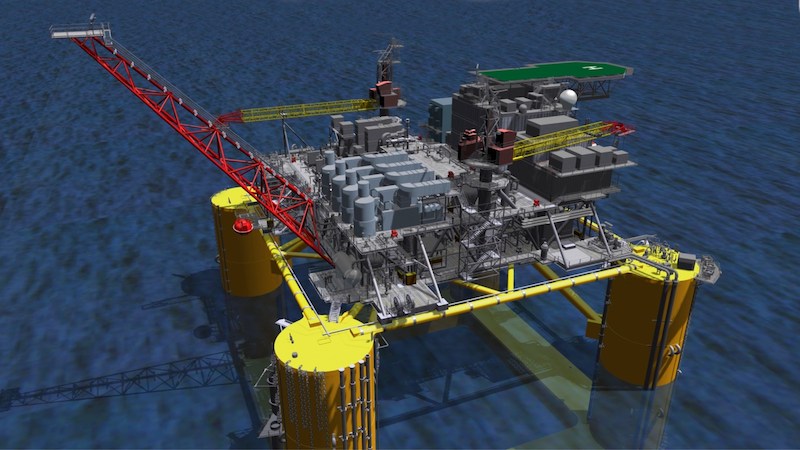On Tuesday, Shell Offshore announced that it had given final approval for the development of its Vito discovery in the Gulf of Mexico. This is yet another positive for the deepwater Gulf and confirms that the recovery is underway. The project’s significance is the confirmation that the industry can reduce costs in what has always been considered the most expensive domestic hydrocarbon basin.
The Vito field is located 150 miles southeast of New Orleans and in over 4,000 feet of water. It is owned 63% by Shell and 37% by partner Statoil. The field is estimated to contain more than 300 million bbls. of recoverable oil. The target start-up date is 2021, when it will begin pumping 100,000 bbls. a day of oil from eight subsea wells hooked up to the four-column, semisubmersible platform.
According to Shell officials, Vito is designed to be profitable with oil prices close to $35 bbl. While current oil prices are approaching $70 bbl., the real key to the project’s success is Shell engineers being able to reduce the cost by 70% from its initial estimate. The company has not provided a cost estimate.
The Vito project is the first deepwater development in the Gulf to be announced since BP elected to proceed with its Mad Dog 2 project in December 2016. Since then, all announced Gulf deepwater projects have been designed as tie-ins to existing production infrastructure, something we expect to see more of in the future. It's speculated that Chevron may soon move forward with one or both of its Tigris and Anchor platforms.
Shell’s Vito project manager, Kurt Shallenberger, highlighted the significance of this development, not only for Shell but also for the industry. He told the Houston Chronicle that Vito was “not about going deeper, but making it affordable and repeatable.” That is a description of how the onshore shale plays have evolved in response to low oil prices.
“Affordable and repeatable” is code for the “manufacturing process” that has come to characterize shale developments, especially those by large oil and gas companies who are beginning to dominate these plays. Just as it has taken years for the industry to develop affordable and repeatable shale developments, the same was true in the Gulf of Mexico. As we see other major Gulf players announce new projects, we will know that the offshore industry has entered its next growth phase.
---




